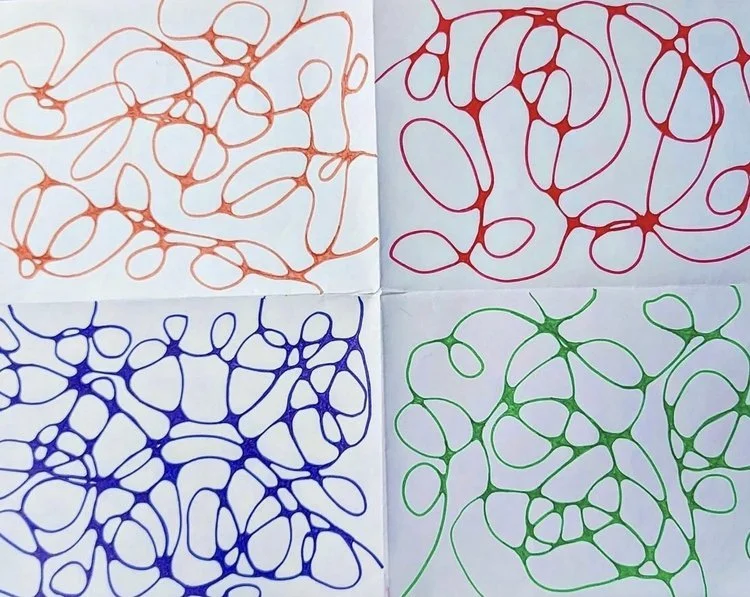
Creativity can be an intimidating concept. Sadly, I’ve known too many people who have been saddled with the “not creative” label since their earliest years. But creativity is important for brain health and for developing strategic thinking skills to help us navigate our aging journeys. That’s why each edition of the Magenta features an “Exercise Your Creativity” practice designed to help you flex your creative muscles. The practice du jour is spring inspired – creating watercolor flowers. Actually, watercolor flower blobs.
Watercolor Flower Blobs
Yes, that’s right “exercise” can be as easy as making watercolor blobs. My friend Ann Goodpasture created the adjacent painting by starting with blobs of color and then adding definition using only a black micron pen.
Supplies required:
Minimum of 140 weight watercolor paper (Strathmore, Arches). Comes in cold or hot press. Cold press paper is more textured; hot press smoother.
Watercolor paints. There are three grades of watercolor paints- children’s, students, and artist grades. Student grade is fine for this exercise. (Winsor & Newton, Schmincke
Watercolor brushes. Beginner brushes like Princeton
or Winsor & Newton are fine.
Watercolor techniques:
Wet-on-wet Painting- Start by wetting your brush with plain water and “painting” a few circles/blobs on your paper. Then dip your brush into your paint palette to add color to your blobs. The color runs but is contained within the water circles. This method creates an organic, loose, and flowy look.
Wet-on-dry painting- Start with dry paper. Dip your brush into your watercolor paints and apply it directly to the dry paper. The opacity of your paint depends upon the amount of water on your brush. This technique achieves more precise and defined shapes.
Watercolor painting is kind of magical. Your painting will undergo a transformation from the wet phase to the dry phase. Once it has fully dried you can add definition and more color using micron pens or water color markers.
-

Doodle For Your Noodle
Our “Doodle for Your Noodle” exercise is designed to transform stress into neurographic art. All you need is a piece of paper and a marker. The technique links our conscious with our subconscious. Without over-thinking it, start to make organic, flowing lines with a marker.
The lines can intersect and even flow off the page. Go back and round out the intersection of the lines so that any hard edges are softened. If you choose, you can fill in the lines using markers, colored pencils, or watercolors.
-

Write Your Story in Six Words
It’s the start of the new year. Spend twenty minutes writing your own six-word story using the following prompt: “What can I do to knock my own socks off in 2024?”
Six word stories are a two-for-one exercise that not only fosters creativity but also helps develop self-awareness. It is surprisingly revealing what you can learn from crafting a story out of so few words. The constraints of choosing only six words is freeing. It relieves the pressure of writing a perfect and precise story. Examples:
“I’m going to learn to weave.”
“Make money. Find love. Keep both.”


